All the Blogs I Meant to Blog in 2015
- Jessica Moes
- Jan 2, 2016
- 8 min read
When I left home, I made firm promises to family and friends that I would keep them well-informed of the goings-on in my life: I’d write letters and call often and post photos and, most importantly, write some blog posts that my grandparents could share with their friends. Well, here I am at the end of 2015: I’m almost two months behind on donor letters, my internet is too slow and too frustrating for regular phone calls, I’m editing photos from early November still, and, yeah, I’ve only written two and a half real blog posts since coming to Cambodia (let’s be real, that rain one was a little short).
I could give you a million reasons why I haven’t been the voracious blogger I meant to be this year: a commitment to simple living, living in solidarity with my less-connected community, frustratingly slow internet connections, a crazy amount of work to do every day, some really good books that occupy all my free time, sheer laziness…. But I think the real reason I can’t bring myself to blog about anything here is that while I have a lot of thoughts on a lot of things, I haven’t found very many conclusions. Which should be totally okay, but there is a major part of me that really struggles with open endings.
But that’s what this year is all about – exploring the unanswered questions and finding a million new ways of looking at a situation. So here’s my New Year’s Resolution, straight from me to you: I’m going to try to get a bit messier on the page and try to feel some feelings right into the blogosphere. (Here’s hoping I can keep this resolution past January 1st!)
And now, in an act of good faith and a big ol’ thank you for sticking with me this year, here are a solid sampling of all the blogs I started but just couldn’t find a way to finish:
Teaching English, Learning Khmer Learning Khmer is tricky. Teaching English is probably trickier. Turns out I’m not that great at either and I’ve been meaning to write about how challenging they are in respect to one another. During lessons I’ve faked being a fortune teller to teach the future tense, acted out every farm animal in the book, and had students attempt to translate their favorite book titles. I’ve found frustrations with ESL Curriculums – some of the best available are clearly not designed for students of developing countries, with introductory vocabulary focused on events like the Royal Wedding and international travel (things that are totally out of my students’ worldview). I’ve struggled through writing lessons plans that adhere to government standards so my students will pass their state-mandated exams, while still learning at their very limited language level (many of my students still cannot read English despite being in the third or fourth level). I have gained a lot of respect for language teachers of my past (shout out to Marc Robinson and Timothy Hastey Bambenek specifically, who have unknowingly inspired many a lesson plan here). I’ve worked my way through 33 consonants and 24 vowels, not to mention 33 subscripts, and struggled through transliteration of English words and phrases with no Khmer alternative. I screw up a lot. My students screw up a lot. But we’re also both learning a ton from each other, so there’s that.
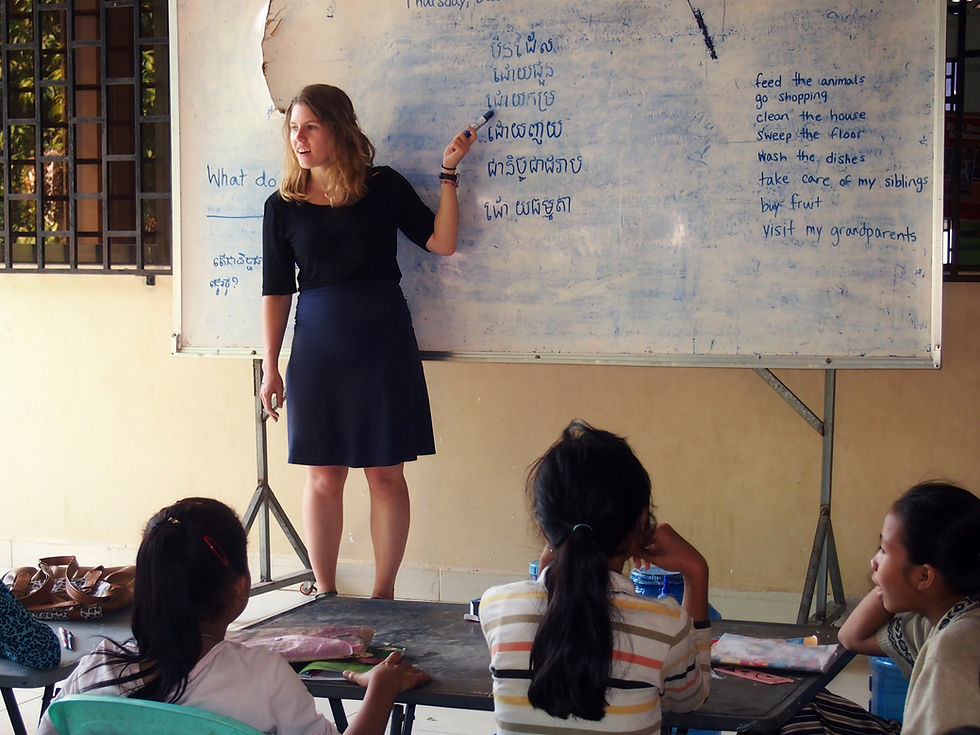
Working on vocabulary as I teach my intermediate English class at Krus Church - here we're learning words related to frequency: "often", "sometimes", "always", etc.And yes - I totally translated and wrote those Khmer words myself (small victories!).
The Legacy of the Khmer Rouge I meant to write this blog after visiting Tuel Slang and the Killing Fields in September, and then again in November after sitting down with my staff members who experienced the genocide and hearing their stories. Why I’m still struggling with this: The legacy of the Khmer Rouge impacts daily life in Cambodia still to this day. It’s not just a wounded memory for so many of the people here that I love and cherish dearly, but is also a visceral reality in the way governments and communities and relationships function in Cambodia today. It’s one thing to try to write about what happened forty years ago – it’s another to try to make any sense of it in today’s still-tumultuous world where we as a society don’t seem to learn our lessons.
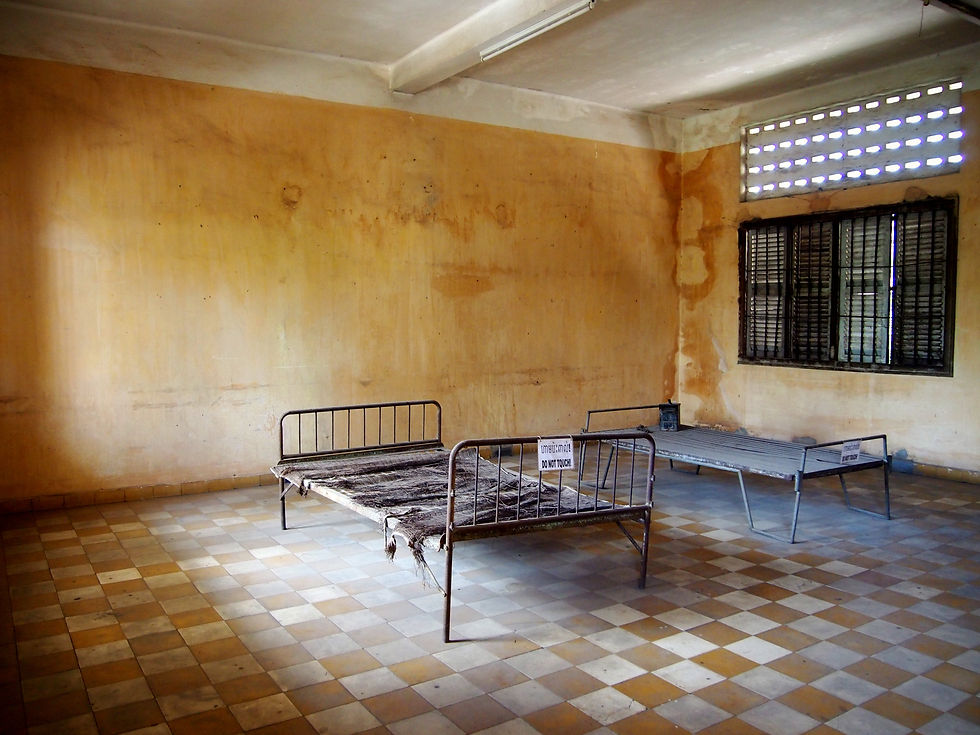
One of the far-too-many rooms at Tuel Sleng Prison in Phnom Penh where just a fraction of the victims of the Khmer Rouge were brutally tortured before being transported out of town to the Killing Fields where they were bludgeoned to death (ammunition was too rare and expensive).
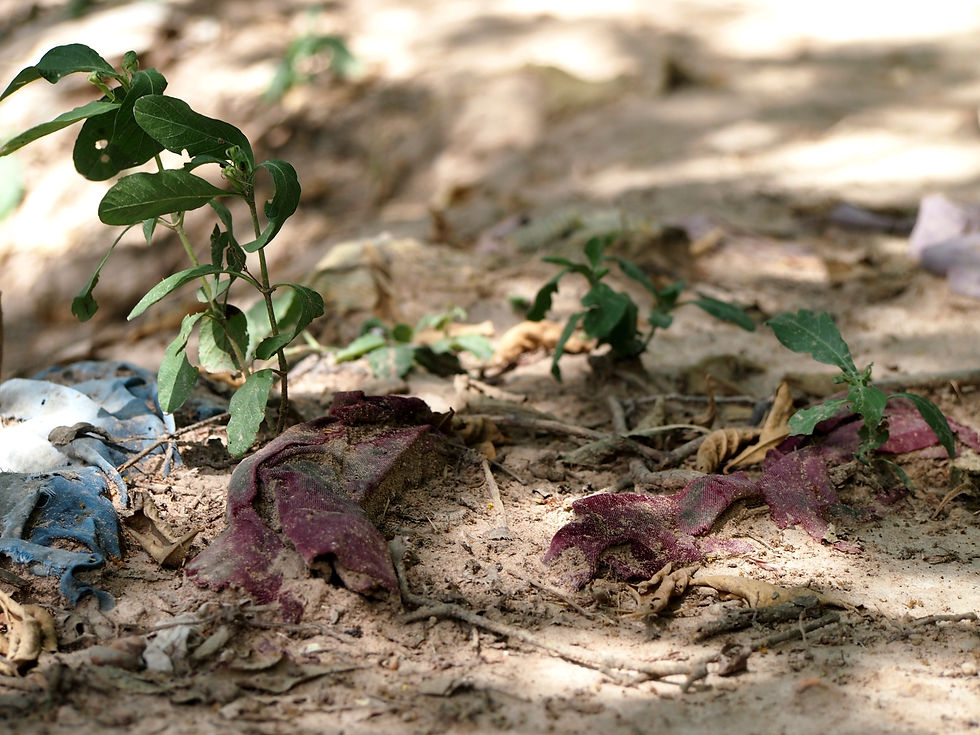
At the Killing Fields of Choeung Ek, the erosion of dirt by rain and visitors'
footsteps has slowly brought the clothing and bones of
victims buried in mass graves to the earth's surface.
Carry There are seven different words in Khmer for the English verb “To Carry”: To carry in a vehicle (“duck”), to carry in hand (“gahn”), to carry on head (“tool”), to carry on shoulder (“lee”), to carry on back (“spee-aye”), to carry in arms (“bay”), to carry by handle (“you-ah”). I figured there was probably a really beautiful blog post to be written about this fact and the way community works in Cambodia. I even had a bible verse picked out to tie it all together: Galatians 6:2 “Carry each other’s burdens, and in this way you will fulfill the laws of Christ.” Turns out there are a lot of other words that have multiple translations in Khmer, including “rice” and “to hit,” so maybe this fact wasn’t as exciting as I originally thought it would be.
The Rice Harvest One of the (many) random roles I have filled during my time in Kruos Village is to serve as a field hand in the rice fields of my coworker Muntar during the harvest. Harvest time in Cambodia happens in December, and requires a lot of time in the hot sun cutting and carrying rice bundles. Rice is kinda a big deal in Cambodia (for most people in my village, it is their sole source of income – something the church is trying to work on with its livelihood project). Part of the reason I never got around to writing this blog is because I knew I’d have to do some research into the rice life cycle process. Luckily, my fellow YAGM Elise just published a blog post on exactly this topic. Go read it, and then picture me working in some of the pictures. That’s basically what this blog post would have looked like if I had actually written it.
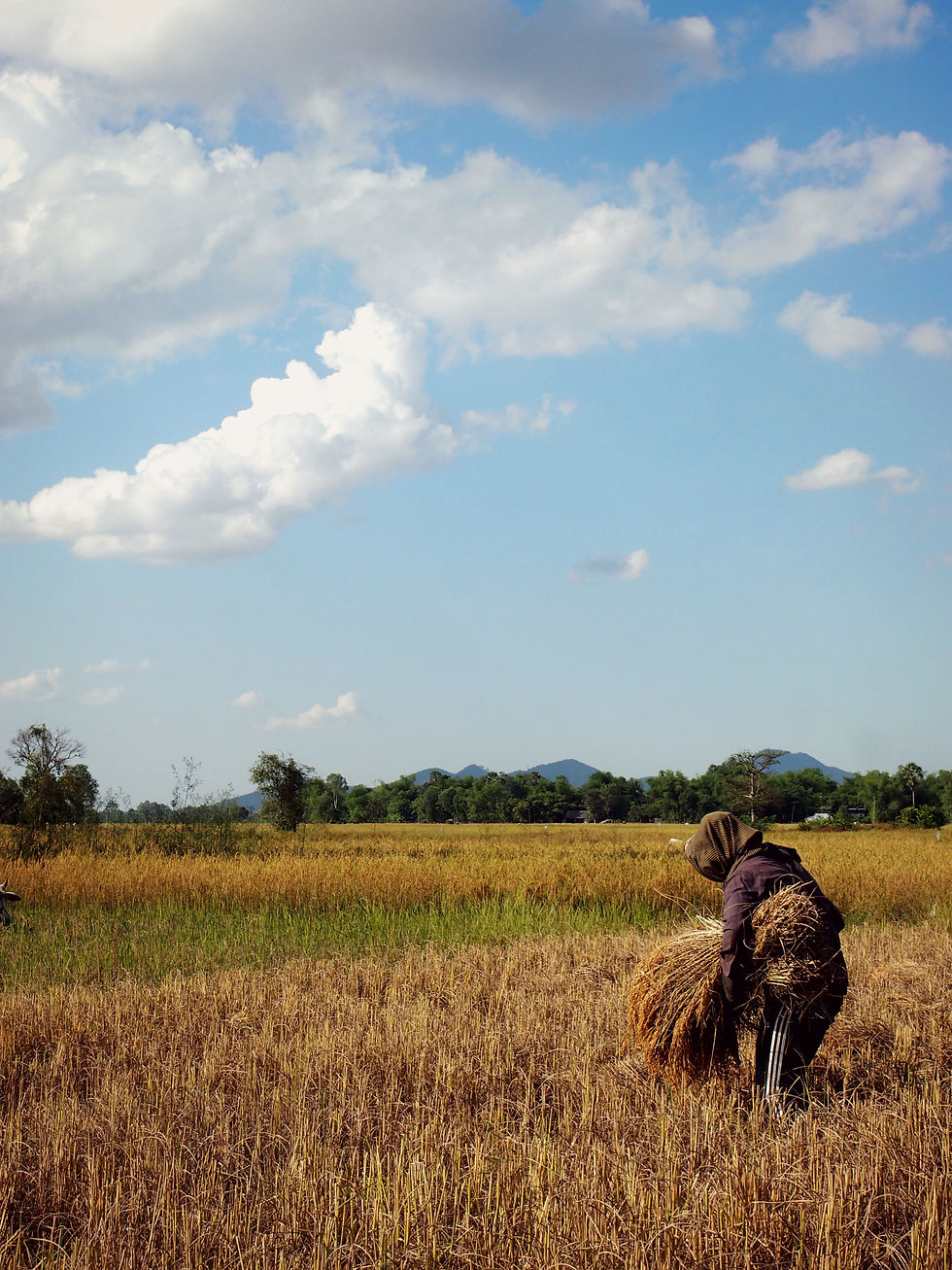
Gathering rice bundles in the Kruos fields.

My coworker Muntar; her husband Tree; my fellow volunteer from Germany, Manu; and I take a break while gathering rice in the Kruos fields.
Sisters, Sisters Even though I have been lucky to grow up with a little sister (hey-o Juliann!), I’m finding renewed energy in spending time with my two host sisters, who are quite possibly my favorite part of Cambodia thus far. Being a really big sister comes with more responsibility, but also a heck of a lot of fun. Suzan, who is ten, is incredibly brilliant and whips my butt at Egyptian Rat Screw, and loves to sit and hold my hand when we ride in the van. Susanna, who is five, is the sassiest human I’ve ever met. She loves playing with clay and eating the chocolate I keep on my desk (I once found her on a tall stack of chairs outside my bedroom window trying to reach in through the bars to get the jar off my desk – of course I rewarded her efforts with more candy). Yes, their parents (Lehiyek and Mose) are aware of how similar the names are, but when I asked about their reasoning they reminded me that everyone in my family has a name that starts with a “J”, so I’m just as weird. I love cuddling in my bed with them in the late afternoons when we make snap chat videos of fart noises. I love the times we play hide-and-seek around the church compound, hiding in the same five spots over and over again. Sanna’s only English phrase is “Jessica, play game.” So we play – a lot.

Sanna, five years old, in an extremely rare posed photo. Sanna hates photos and loves to cover her face.
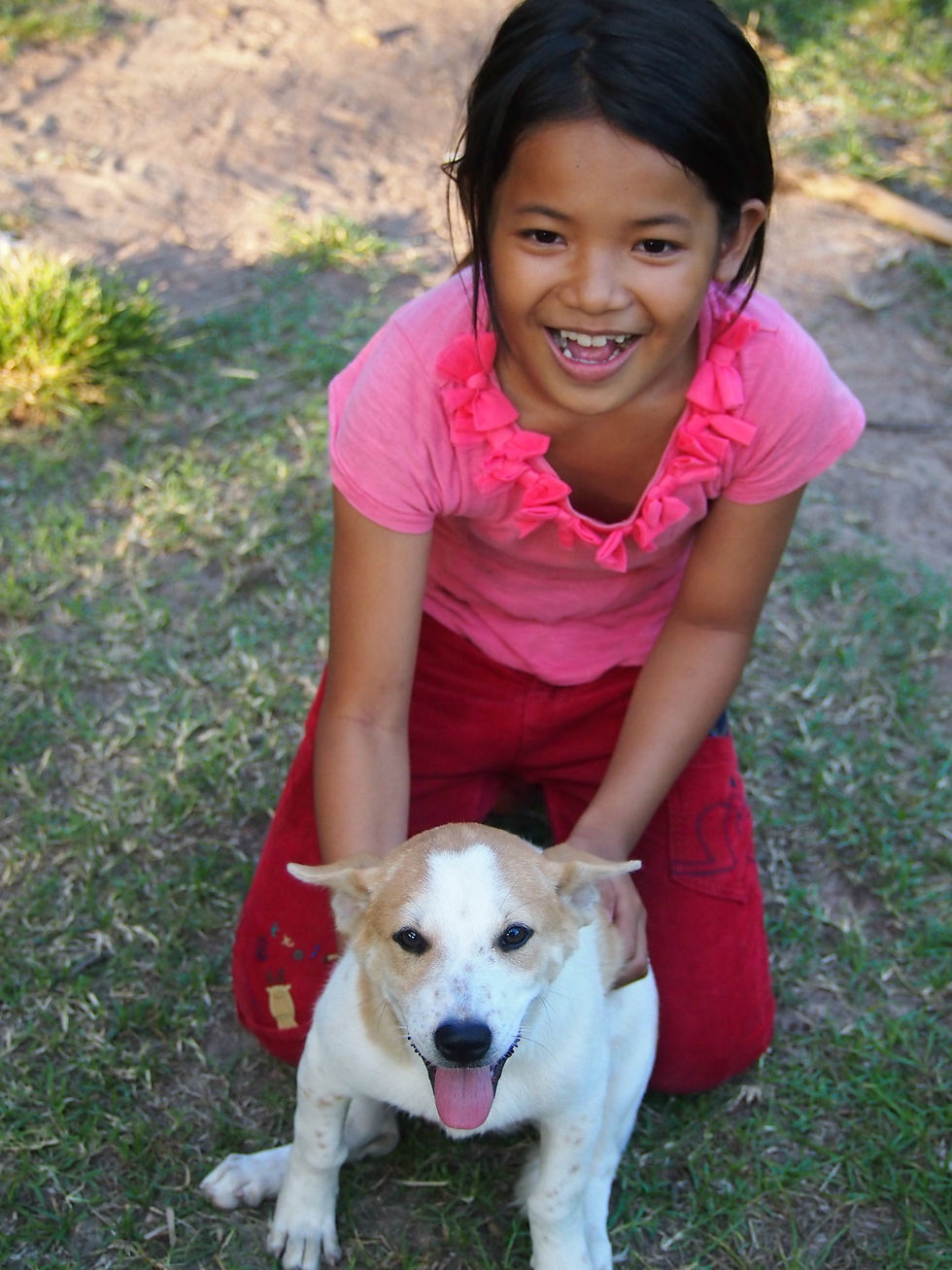
Suzan, ten years old, smiling with Chiro, our new puppy!
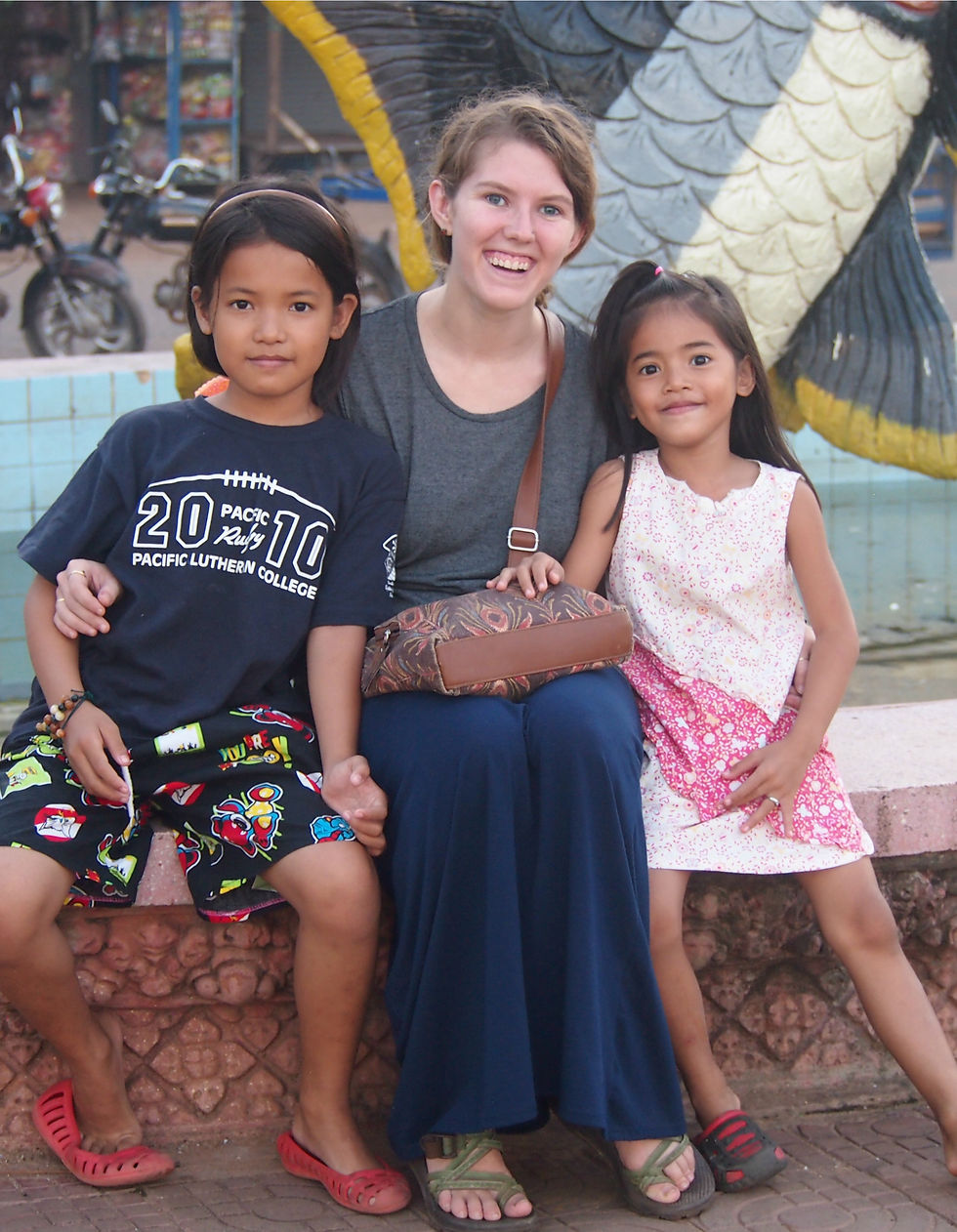
Sisters taking sister photos.
Ratanakiri Retreat In November, our YAGM group had our first major retreat. After an amazing thanksgiving feast prepared by Adam and Sarah (ohmygod let’s talk about that green bean casserole and mashed potatoes and apple pie, shall we?), we jumped in a van and tackled the eight hour drive to Ratanakiri province in North East Cambodia. Ratanakiri is known for its undisturbed jungles, a rarity considering Cambodia’s current zest for deforestation in much of the country. We spent a day hiking through these vast overgrowths of foliage and fawna (think the ending scenes of Apocalypse Now, which take place in this same area) and jumping off tree branches into a beautiful freshwater lake (the Minnesota girl in me was thrilled). A second day was filled with longboat rides up the Sansa River and a tour of an indigenous hill tribe community and cemetery. Our afternoons and evenings were filled with thoughtful reflection on our time in Cambodia thus far, with specific focus on the economics of poverty and the choices people make regarding money in our specific cultural contexts.
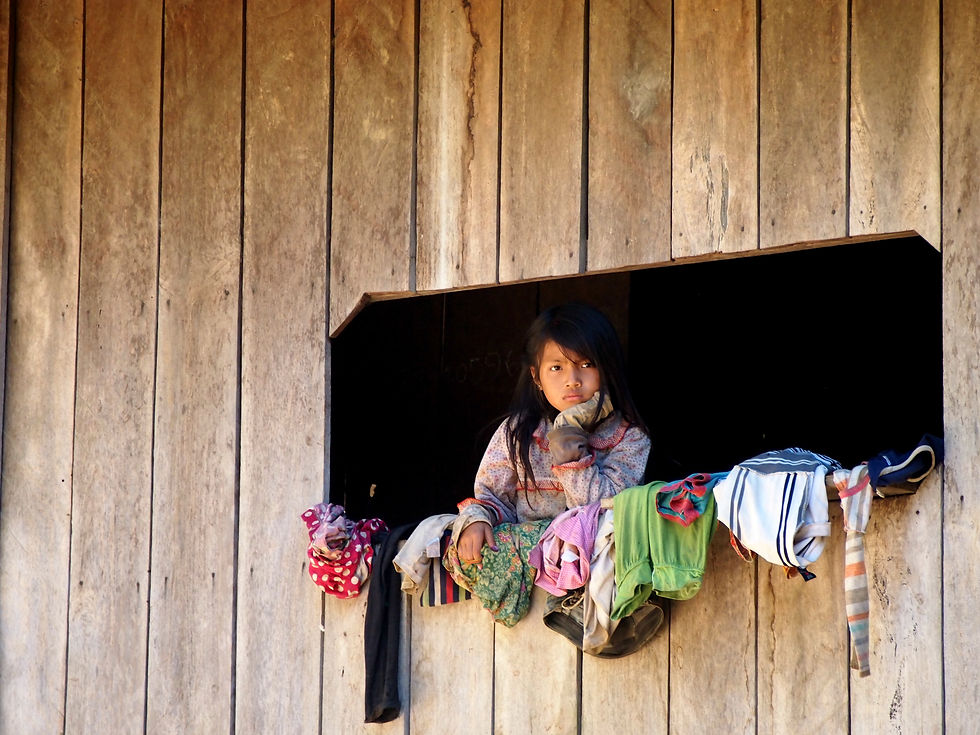
A young girl from an indiginous community in Ratanakiri leans out of her window.
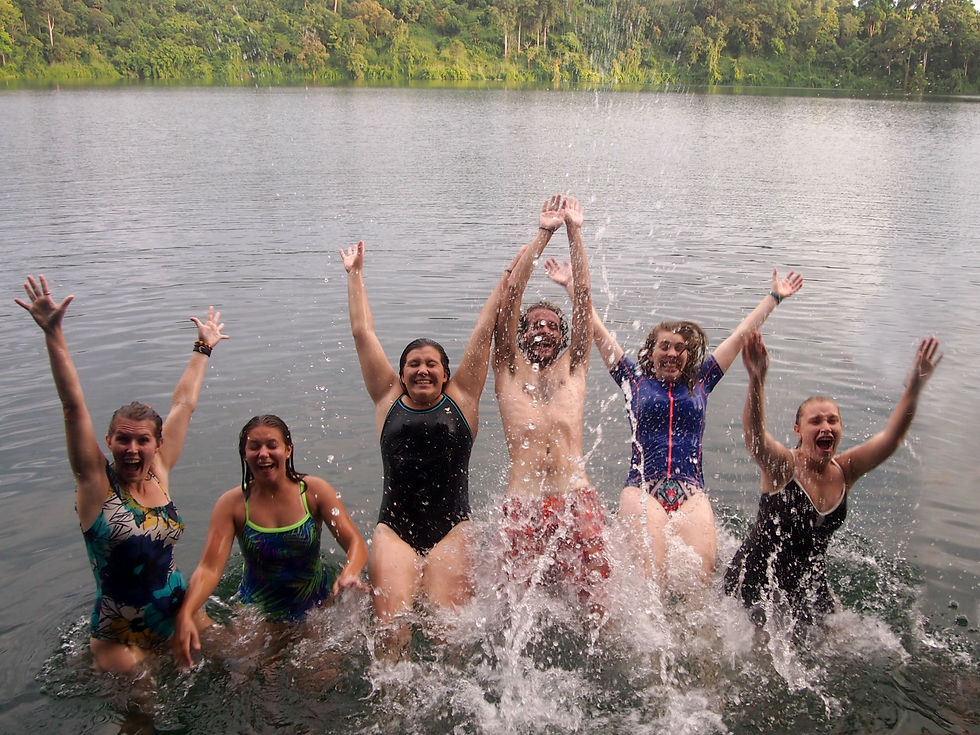
The YAGM gang takes a dive into Yeak Laom Lake in Ratanakiri Province.
On Being Earlier this fall, I began to ruminate on my sense of place after reading a blog post by my friend Ryan who is currently serving in South Africa (you should read it – it’s brilliant writing). Ryan made me think about how so much of my idea of success is focused on what I accomplish, and not on who I simply am. In short, Ryan reminded me that I am a human “being” not a human “doing,” and damn did that make me sit down and think. I’m a dreamer. I live for big moments and am always contemplating the what if’s and analyzing how different decisions may lead me down different paths to dramatically different ends. I love brainstorming possibilities. But sometimes, this comes at the cost of appreciating the moment I’m in. I’m rarely satisfied with just being. So much of my childhood and young adult life has been figuring out what’s next… It’s hard to train the brain to find joy in being, but that is nevertheless the true reason I think I was called here (at least, the selfish reason that benefits me… I like to think there’s another awesome reason I’m here that has to do with me being able to give something to this community too). A great example: I never have ever, nor probably ever will be after this year, want to be a teacher. I wanted to do development work in Cambodia (like literally all the other YAGM Cambodia site placements) so that I could transition that back into a career when I got home in community or international development. I didn’t want to work in education. Hell, I was scared to be working at a church (my faith journey’s had its share of ups and downs). But here I am anyways, and while I resisted at first, complained to my YAGM peeps constantly, I just decided one day that enough was enough and that a bad attitude wasn’t changing my situation. It’s not like going home was a viable option for me – I’m here for the full experience. And you know what? I was floored by just how much I enjoyed myself that day. When I focus on where my feet are, instead of where my feet are going, I’ve discovered that there is as much – if not more- satisfaction to gained.
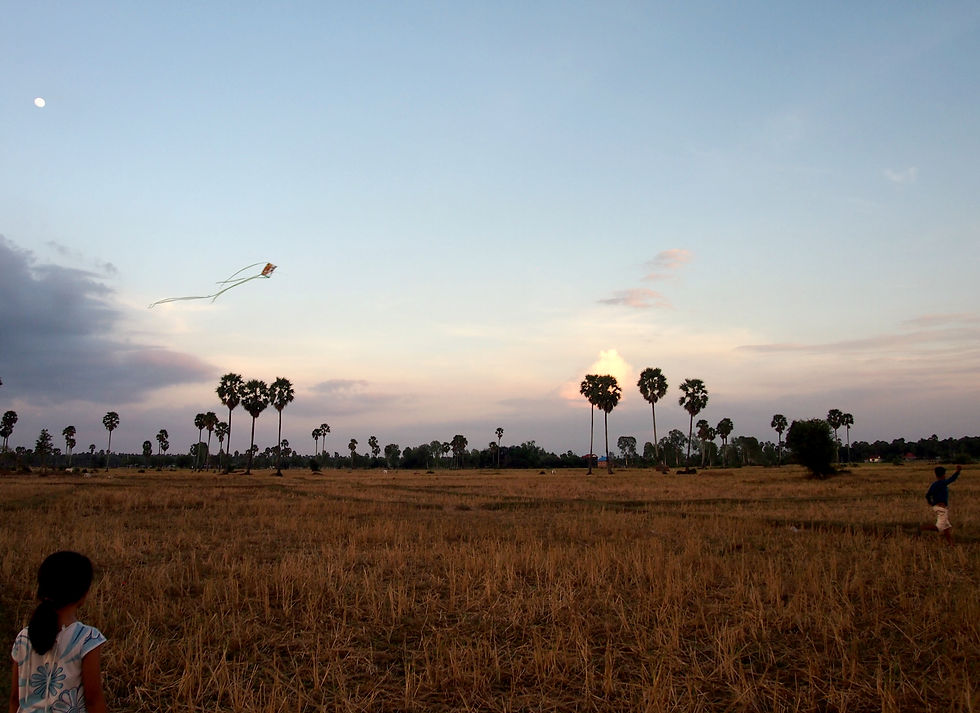
Flying kites in the Kruos rice fields after the harvest.
Good news for those that made it all the way through this post – writing this particular blog post forced me to sit down and start writing about a LOT more topics that I actually ended up having to cut from this post due to their length. That means a lot more blog posts coming your way! (Hopefully, I mean. We’ll see about that resolution!)











































Comments